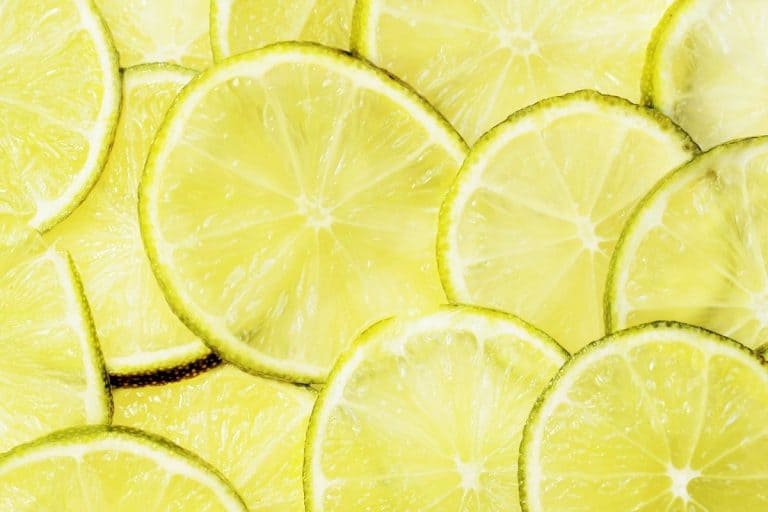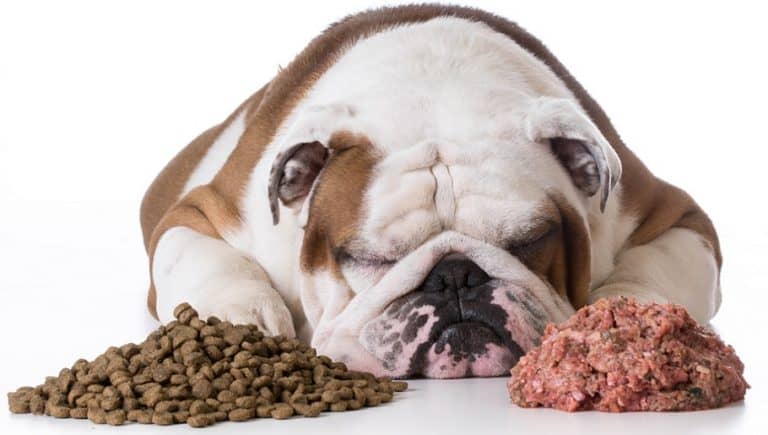How Much To Feed A Labradoodle Puppy? 4 Week – 6 Week – 8 Week Old Labradoodle
Most Labradoodle owners wonder how much and what they should feed their puppies, given that there are so many puppy foods in the market.
The food that you are feeding your Labradoodle should could contain essential vitamins and nutrients, with a focus on digestible proteins to ensure healthy growth.
Calcium and phosphorus-rich diets are essential for strong bone growth, while you should aim for at least a quarter of you pup’s protein to be from dry foods.
You should also be mindful to avoid overfeeding as too much growth in a short period may harm the joints of your Labradoodle pup.
This article will give you information on how you can feed your Labradoodle and the best puppy food for Labradoodles.
How Much Should A Labradoodle Puppy Eat?

The amount a Labradoodle puppy should eat depends on their specific age, weight and activity level.
In addition to looking at a Labradoodle feeding chart, a good, scientific way of calculating how much a Labradoodle should eat as minimum on a daily basis is by calculating their resting energy requirement (RER).
You then multiply this by an amount which varies according to their life stage. RER refers to the amount of energy multiplying their body weight in kilograms to the power of ¾ then multiplied by 70. For example, an adult Labradoodle weighing 10kg would need 70(10kg) ¾ = 400 calories.
For a Labradoodle aged 0-4 months, typically you should multiply their RER by 3. For a Labradoodle Puppy aged 4 months and above, this reduces to 2 x RER.
Labradoodle Puppy Feeding Chart
The Labradoodle feeding chart correlates age with amount and frequency of food your Labradoodle puppy requires.
Although the feeding chart is robust, a Labradoodle puppy’s feeding program can be different from others depending on factors such as activity level, genetics, and home environment.
For example, a Labradoodle puppy that weighs between 3-5 lbs at the age of 6 weeks, you should feed your puppy three to four times in a day, this should amount to 1 cup per day of recommended puppy foods.
Another factor that may impact your puppy’s feeding chart is level of exercise. For example, if your Labradoodle exercises three times a day, they will need more food than a puppy who exercises once a day.
A general Labradoodle puppy feeding chart is explained below:
2 Week Old Labradoodle Puppy
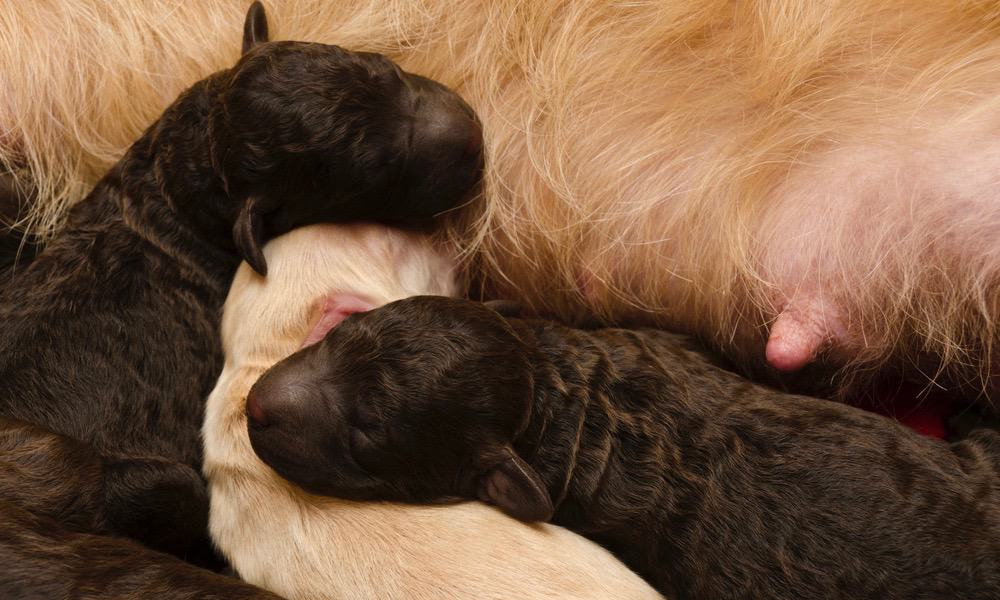
A Labradoodle puppy that is two weeks old depends fully on their mother’s milk to meet their nutritional requirements.
The stomach of a Labradoodle puppy is not fully developed hence feeding on the mother’s milk or the commercial equivalent if the mother is not there.
The mother’s milk contains all the vitamins and minerals the puppy needs for their growth and development during this early stage of their life. Do not feed your 2-week-old puppy any food.
4 Week Old Labradoodle Puppy
When a Labradoodle puppy is four weeks old, you can start weaning and introducing solid food to them in addition to their mother’s milk.
At this age, your puppy should be getting the majority of their calories from their mother’s milk, however, if they are interested you can give them a ¼ cup of dry kibble mixed with lukewarm water to make it easier to digest. You should feed your puppy this ¼ cup spread across 4 meals a day.
6 Week Old Labradoodle Puppy
A 6-week-old Labradoodle is an active puppy, and they have high energy levels. At this age, a Labradoodle puppy is starting to get used to people and other dogs in their environment.
They need to be fed 1 cup of dry kibble 3-4 times a day in addition to their mother’s milk. At this age, you should also moisten the kibble with lukewarm water.
8 Week Old Labradoodle Puppy
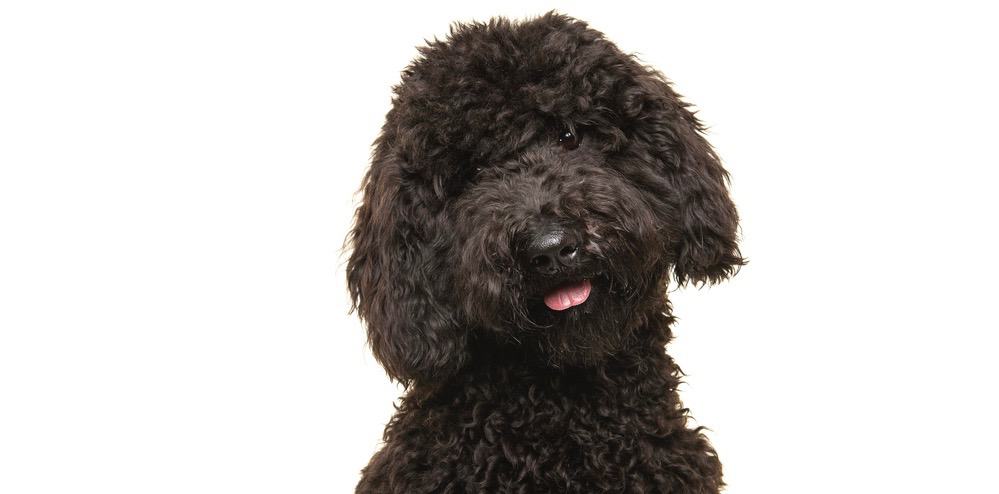
At 8 weeks, your puppy should be fully weaned. You can now solely rely on puppy food because their digestive track can now handle it.
In terms of amounts, at 8 weeks your puppy should have 1 cup spread across 3 meals in a day to satisfy their nutritional needs.
10 Week Old Labradoodle Puppy
When a Labradoodle is 10 weeks old, they can feed fully on wet puppy food. At this stage they should weigh around 20 lbs and you will see their appetite significantly increase.
Typically, they will need to eat 3 times per day, totaling 3 cups of wet kibble in a day. Consult your vet to check if your Labradoodle puppy can start consuming dry food.
12 Week Old Labradoodle Puppy
A 12-week Labradoodle puppy is old enough to eat dry food. You can now make the transition from wet food to dry food because the digestive system of your puppy is fully developed.
Ensure that you transition your puppy slowly over one week to avoid any stomach issues.
At this age, your Labradoodle Puppy can consume 3 to 5 cups in a day spread across 3 meals. Do consult with your vet for the right transition process and guidance on the right food to feed your puppy.
Best Puppy Dog Food For Labradoodle
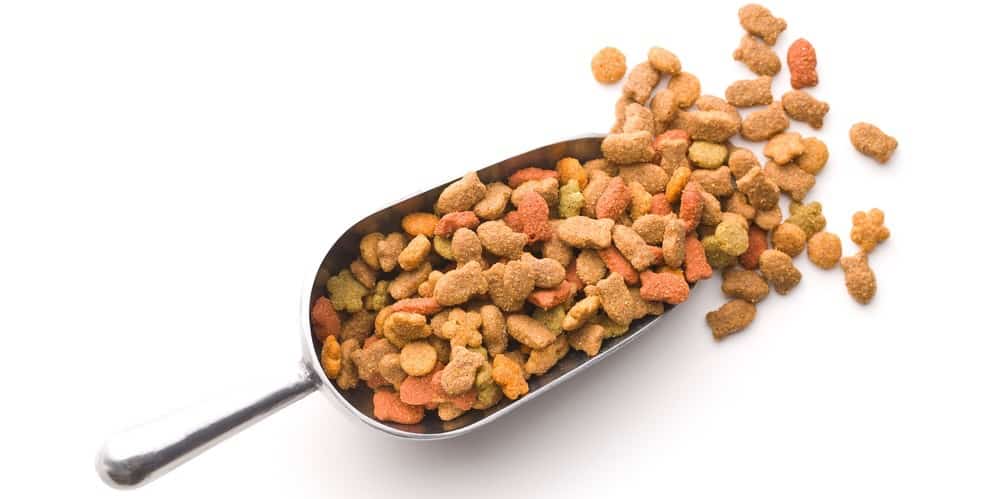
#1. Royal Canin Puppy Dry Food
Editor’s Choice
This puppy dry food is tailor-made for Labradoodle-specific needs. If your puppy grows too fast, their weight can affect their skeletal development leading to deformities.
That is why feeding them the right food is necessary to avoid future weight problems. The Royal Canin dry food is designed for puppies between the ages of 8 weeks and 15 months.
Pros
- Has enough protein, energy, phosphorus, and calcium content for healthy weight and growth.
- Helps to maintain a balanced intestinal environment and healthy digestive tract.
- Improves the puppy’s immune system.
Cons
- May cause loose stool in some puppies.
#2. Purina One SmartBlend Dog Food
Runner-Up
Purina One dry dog food is suitable for large dogs such as Labradoodle. Having real chicken as its first ingredient, Purina One is made with zero fillers and other wholesome ingredients.
This dog food supports your puppy’s muscles and maintains their healthy heart. Each serving is designed to maintain your puppy’s ideal body frame.
Pros
- High protein content for healthy muscle growth in your puppy.
- Has omega 6 fatty acids for healthy coat and skin.
- Has DHA for developing your puppy’s vision and brain.
- Does not have any artificial flavors, colors, and preservatives.
Cons
- Some batches have been reported to have gone bad by customers.
#3. Blue Buffalo Wilderness Puppy Dog Food
The Blue Buffalo dog food is packed with real chicken to satisfy your puppy’s meat cravings and give them healthy and strong muscles. It is made with important ingredients such as taurine to improve your Labradoodle’s cognitive and eye health.
Pros
- Has fatty acids necessary for the growth and development of your puppy at any stage.
- Supports your puppy’s immune system because of the precise blend of minerals, vitamins, and antioxidants.
- Made without corn, grains, soy, wheat, artificial flavors, or meat by-products.
Cons
- Can cause loose stool for some puppies.
- Not suitable if your puppy is a picky eater.
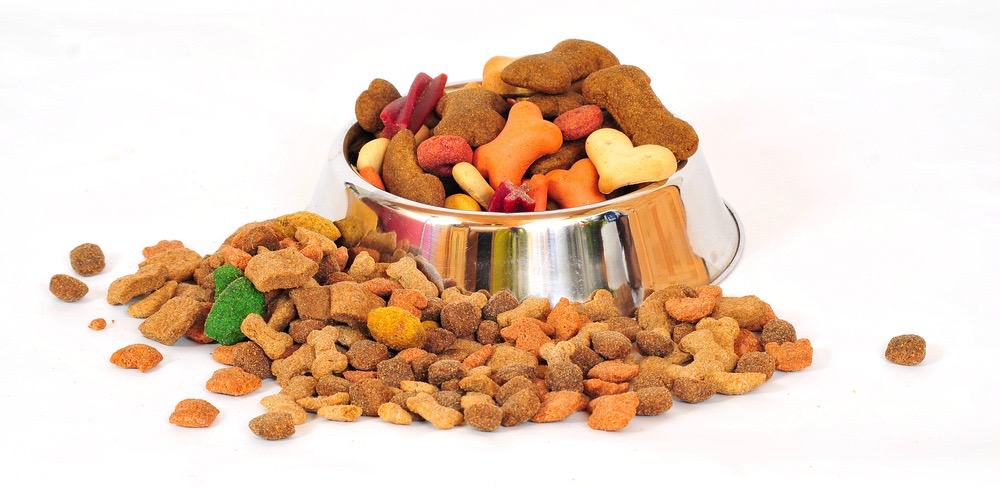
#4. Blue Buffalo Life Protection Dog Food.
Blue Buffalo Life Protection Puppy food is specifically designed for the well-being and health of dogs. This formula contains real meat, garden veggies, whole grains, and fruit as well as other ingredients rich in antioxidants.
This puppy food is formulated for healthy growth and development.
Pros
- The vitamins, phosphorus, and calcium in this puppy food are necessary for strong teeth and bones.
- The high-quality protein content helps with muscle development.
- Omega 6 and 3 fatty acids promote a healthy coat and skin.
- The antioxidants, minerals, and vitamins improve your puppy’s immune system.
Cons
- Packaging issues.
- Can cause loose stool in some puppies.
#5. Eukanuba Puppy Dry Dog Food
The Eukanuba puppy dry food is designed to provide your Labradoodle with balanced and complete nutrition to help in the development of their mind and body.
This puppy food is made with high amounts of phosphorus and calcium, high-quality protein, optimized carbohydrates, fats, and DHA to ensure healthy growth for your furry friend.
Pros
- Supports healthy bone and muscle growth.
- The DHA helps with the healthy development of the brain.
- The main ingredient is chicken.
Cons
- Can cause itching in some puppies.
2 Months Old Labradoodle Puppy Weight
The weight of a 2-month Labradoodle is between 5 to 15 pounds. At this age, you can wean your dog and they can start eating solid foods. Follow the guidelines on the food packaging for the correct amounts to give your puppy.
During this stage, a Labradoodle is learning to bark, bite, establish social relations with people and other dogs as well as the different posture meanings.
3 Months Old Labradoodle Puppy Weight
A 3-month-old Labradoodle weighs between 20 and 25 pounds. Their food majorly includes dry food as the stomach can handle it. Ensure that you are feeding your puppy the right food according to their weight.
During this stage, your puppy is becoming curious and starts to question authority. They will try to dominate and can become over-excited to a point of grabbing their leashes.
4 Months Old Labradoodle Puppy Weight
The weight of a 4-month Labradoodle puppy is around 25 and 35 pounds. During this stage, your puppy is more dependent, and their feeding program is clear.
Make sure that you feed them the right number of calories according to their activity level to prevent them from gaining weight.
Switching From Labradoodle Puppy Food to Adult Food
When your Labradoodle grows from being a puppy to an adult, their need for high amounts of calories and protein reduces.
Therefore, it is time to switch from puppy food to adult food because their muscles and bones do not need the same energy they needed when young.
A larger breed of Labradoodle is fully grown when they reach the age of about 18 and 20 months while the smaller breed is fully grown at the ages of around 10 and 12 months.
When your Labradoodle is an adult, you must feed them food designed for adult dogs.
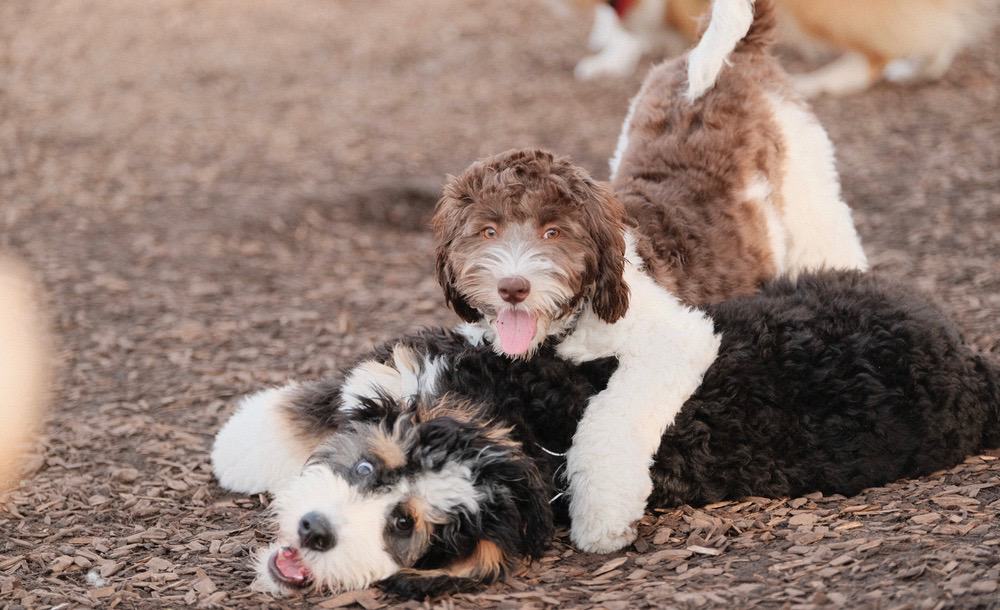
To avoid stomach issues, slowly switch the puppy food for adult food. Start by mixing the new food with the old puppy food until the food contains more adult food.
It should take around 5 to 7 days for your puppy to fully transition from puppy food to adult food. This period will help your puppy’s stomach get used to the new food preventing any stomach problems.
What If My Labradoodle Won’t Eat?
Labradoodle puppies need to eat every couple of hours to maintain their energy levels and blood sugar. If your puppy has missed 1 or 2 meals, there is no need to worry too much.
Your puppy could be excited about their new home and surrounding, that is why their appetite has reduced.
However, if your puppy has not eaten in the last 12 hours or more, you should be concerned and take them to the vet.
There could be underlying health conditions affecting the appetite of your Labradoodle. You should also contact the vet immediately if you notice that your puppy is showing signs of vomiting, diarrhea, or lethargy.
Can You Free Feed Your Labradoodle Puppy?
Free feeding is where you always leave a bowl of food for your Labradoodle. This means that you refill the bowl when it gets low. Your puppy will have constant access to their food bowl, and they can eat as much and as often as they want.
Free feeding is an easy and convenient way of feeding your Labradoodle, however, it comes with its disadvantages. First, it can lead to obesity in your Labradoodle because they eat more than they need by eating all day.
Free feeding makes it difficult for you to understand the eating habits of your Labradoodle because it is difficult to know the amount of food your puppy is eating at one time.
Free feeding works well with dry food but not wet food. If left out, wet food does not stay fresh longer and can go bad easily which may cause stomach problems.
What Nutrients Does A Labradoodle Puppy Need?
A newborn Labradoodle gets their nutrients fully from the mother’s milk. However, if their mother is not around, commercial milk can be used which is specifically designed to give the puppy all the nutrients they need.
Weaning starts when the puppy is 3 or 4 weeks old, and they can start eating solid food. Whether canned or dry food, ensure that the label says it is for puppies. A Labradoodle puppy needs the right amounts of fats, minerals, proteins, vitamins, and water to properly grow.
The packaging of commercial food that you feed your puppy should say either ‘complete’ or ‘balanced’ and have all the nutritional requirements that your puppy needs. If you are not sure what nutrients your Labradoodle needs, consult with your vet for recommendations.

Should You Feed A Labradoodle Puppy Supplements?
A Labradoodle puppy should get enough vitamins and minerals if you are feeding them a balanced, complete, and healthy puppy food. Unless advised otherwise by the vet, Labradoodle puppies do not need to be fed supplements such as calcium.
Calcium and other supplements can be dangerous to puppies if they take immoderate amounts. Too much calcium can cause health issues to the bones, joints, and muscles, affecting their growth.
However, some puppies may need calcium supplements to help them grow but should be recommended by the vet.
How Much Water Should A Labradoodle Puppy Drink?
The general rule is that adult dogs require about one ounce of water per one pound of their weight in a day. However, puppies despite being small, drink more water than adult dogs depending on their size, age, and activity level.
A newborn Labradoodle gets most of their hydration from the mother’s milk, but as they start being weaned and eat solid food, they will need water.
Typically, puppies need around half a cup of water every 2 hours. You need to ensure that they are drinking enough water and not excess as well. They may need more water during active days.
Final Thoughts
Hopefully, the above article has given you all the information that you need to correctly feed your Labradoodle puppy to ensure that they have healthy growth and development in all stages of life.




